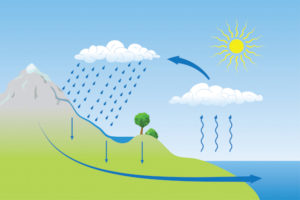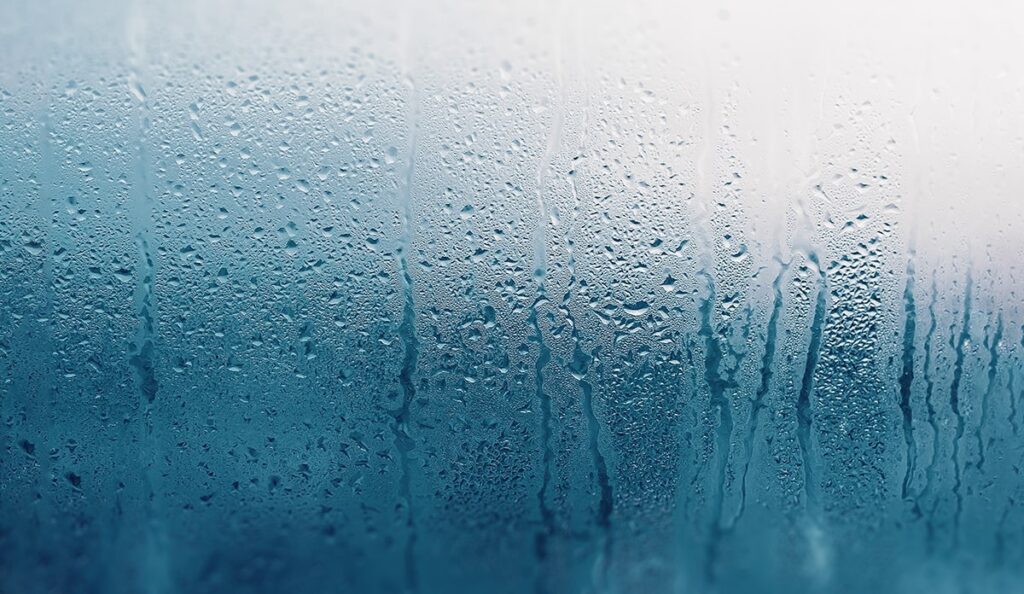We don’t see it happening, but under almost all normal atmospheric conditions, some volume of a mass of water evaporates and condenses in a constant cycle. Water rises and disperses into the surrounding air as the gaseous water vapor when water evaporates.
Humidity is the presence of water vapor in the atmosphere. The more water evaporates in a given area, the more water vapor rises into the air, and the higher the humidity of that area is. Hot places tend to be more humid than cool places because heat causes water to evaporate faster.
What is humidity?
We don’t see it happening, but under almost all normal atmospheric conditions, some volume of a mass of water evaporates and condenses in a constant cycle. When water evaporates, it rises and disperses into the surrounding air as the gaseous water vapor.
Humidity is the presence of water vapor in the atmosphere. The more water evaporates in a given area, the more water vapor rises into the air, and the higher the humidity of that area is. Hot places tend to be more humid than cool places because heat causes water to evaporate faster.
Why does humidity happen?

It might sound like water evaporation is a bad thing. Liquid water is useful, plus, you know, essential for all life. Water vapor doesn’t seem like it’s useful for much of anything–other than making you uncomfortable. Believe it or not, though, water evaporation and humidity serve a critical function of the natural world. We couldn’t do without it!
When liquid water evaporates into gaseous water vapor, it has completed one third of the all-important water cycle. The water cycle is nature’s way of distributing water to things that need it. If water didn’t evaporate, we wouldn’t have clouds, and it would never rain!
How does water evaporation cause rain?

When water vapor rises, water molecules in the vapor combine with each other and with other particles like dust, salt, and smoke. Eventually, these molecules latch together until they’re big enough to be visible as clouds.
The higher the water vapor rises, the thinner the air around it becomes. Less air means there isn’t as much for gravity to press down on, which means less air pressure. Less pressure means air molecules aren’t pressed together as tightly, which lowers air temperature (it’s like when people step out of a crowded elevator). When temperatures cool down, the water particles in clouds condense into their liquid form and fall as rain.
How Do We Measure Humidity?
There are a couple of different means of calculating humidity in absolute and relative terms. Each method has its uses:
ABSOLUTE HUMIDITY
Absolute humidity is simply the total mass of water vapor in a given air volume, regardless of that air’s temperature. In scientific terms, it’s the most “accurate” measurement of humidity since the amount of water vapor in the air directly determines humidity.
As “accurate” as absolute humidity may be, it’s expressed in grams of moisture per cubic meter of air. “5 grams per cubic meter of air” probably doesn’t give you a great idea of how humid it “feels” outside (unless you’re a lot smarter than we are). That’s where relative humidity and the “dew point” come in.
DEW POINT
Condensation only occurs when there’s enough water vapor in the air for the molecules inside the vapor to coalesce into water droplets. The only way that happens is if water vapor condenses faster than it can evaporate.
The dew point is the temperature the air must be for water to condense and evaporate at the same rate. If the air temperature matches the dew point, the air is as saturated as it can be without condensation forming. Condensation forms when the air temperature falls lower than the dew point. If the air temperature increases, water evaporates faster, and condensation doesn’t form.
RELATIVE HUMIDITY
Dew point is used to calculate relative humidity. The relative humidity is a percentage measurement of water vapor saturation relative to maximum saturation. In other words, relative humidity measures how close the air temperature is to the dew point. For example, 100% relative humidity means the air temperature has reached the dew point.
This method of reporting humidity is considered “relative” because it doesn’t actually measure how much water vapor is in the air. Instead, it measures how much water vapor is in the air relative to how much that volume of air can hold. So the closer to 100% the dew point is, the more humid the air feels.
Why Humidity Changes How We Feel
Most residents of the Minneapolis/St. Paul area understand that increased humidity makes the air feel warmer and can increase their discomfort as the temperature increases. You notice that your skin feels sticky at a high humidity level, and your discomfort level is significantly higher. But what many people do not grasp is that the humidity decreases their comfort because it slows the body’s natural cooling system.
Your body uses sweat and its evaporation to cool itself. But when there is already an excess of moisture or humidity in the air, your sweat takes longer to evaporate. And in that time, you begin to dehydrate, feel fatigued, and suffer from muscle cramps. In more severe cases, you could suffer heat stroke, heat exhaustion, or faint due to increased body temperature from lack of natural cooling from sweating.
Another Issue Related To Humidity
Have you ever noticed that on a very humid day, even your air-conditioned home does not feel as comfortable as it does on less humid days? The decreased comfort in your home is much like your body’s issues when trying to cool itself on a humid day. The AC system in your home is tasked with removing the heat from the air in your house and also removing the humidity. But because the outside air is already full of moisture, your AC system must work even harder to transfer humidity from the house to the outdoor air.
Some of the common signs of high humidity in your home include:
- Moist or sticky feeling air inside your house
- Fogged windows as the humidity vaporizes into moisture on the glass
- A new musty odor in your house as the increased humidity can lead to mold and mildew issue
Solving High Humidity Indoors
Adding a dehumidifier to your AC system is the best way to reduce the workload of your AC system, extend its life expectancy, and increase your comfort level. A dehumidifier will remove the moisture from the air before it is pushed through the ductwork in your home. Not only will this increase your comfort level, but it will also decrease the potential for condensation inside the ducts, which will create future mildew and mold issues.
The Perks Of A Dehumidifier
Of course, everyone is happier when they enjoy cool and refreshing temperatures and low humidity inside their homes. But increased comfort is just the beginning. You will also find that your AC system is not running as frequently, decreasing your electric bill while still allowing you to remain cool and comfortable. And finally, the reduced workload on your air conditioning system means that it will last longer, providing more value for your investment in the equipment. Contact the HVAC and dehumidifier experts at Blue Ox Heating & Air at 952-208-4570 to learn more about installing a dehumidifier at your home.



Comments are closed.